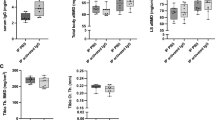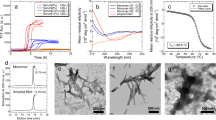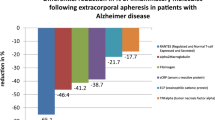Abstract
PREVIOUS histological and experimental investigations have suggested a close pathogenetic relationship between the reticulo-endothelial system (RES) and amyloidosis1–3. The two-phase cellular theory2 considers the reticular cells and the plasma cells originating from them to be of aetiological importance in the formation of amyloid. The shift from pyroninophilia to periodic acid–Schiff positivity in the cells is believed to represent the morphological equivalent of exhaustion of the RES which leads to amyloid development. Our functional studies4 on experimental amyloidosis have revealed a strain dependent increase with phagocytic activity of the RES during the late preamyloid stage, followed by a return to the normal state at the time of the first deposition of amyloid. Attempts to influence experimental amyloidosis by alteration of the activity of the RES by carbon “blockade”5,6, as well as its increase by castration, seem to inhibit the formation of amyloid7. Increased amyloid formation has been induced by treatment with colloidal gold8.
This is a preview of subscription content, access via your institution
Access options
Subscribe to this journal
Receive 51 print issues and online access
$199.00 per year
only $3.90 per issue
Buy this article
- Purchase on Springer Link
- Instant access to full article PDF
Prices may be subject to local taxes which are calculated during checkout
Similar content being viewed by others
References
Schneider, G., Erg. Allg. Path. Path. Anat., 44, 2 (1964).
Teilum, G., Amer. J. Path., 32, 945 (1956).
Teilum, G., Acta Path. Microbiol. Scand., 61, 21 (1964).
Zschiesche, W., and Ghatak, S., Verh. Dtsch. Ges. Path., 49, 284 (1965).
Smetana, H., J. Exp. Med., 45, 619 (1927).
Jaffé, R., Verh. Dtsch. Ges. Path., 26, 254 (1931).
Peräsalo, O., and Latvalahti, J., Acta Path. Microbiol. Scand., 34, 208 (1954).
Kirkpatrick, J. B., and Sorenson, G. D., Exp. Mol. Path., 4, 627 (1965).
Biozzi, G., Benacerraf, B., Grumbach, F., Halpern, B. N., Levaditi, J., and Rist, M., Ann. Inst. Pasteur, 87, 291 (1954).
Halpern, B. N., Benacerraf, B., and Biozzi, G., Brit. J. Exp. Path., 34, 426 (1953).
Haug, H., Med. Grundlagenforsch., 4, 299 (1962).
Halpern, B. N., Biozzi, G., Stiefel, C., and Mouton, D., C.R. Soc. Biol., 152, 758 (1958).
Author information
Authors and Affiliations
Rights and permissions
About this article
Cite this article
ZSCHIESCHE, W., GHATAK, S. Influence of B.C.G. on Experimental Amyloidosis. Nature 212, 1262–1263 (1966). https://doi.org/10.1038/2121262a0
Published:
Issue Date:
DOI: https://doi.org/10.1038/2121262a0
This article is cited by
-
Pseudowasting-Syndrom und Tumorbildung nach 20-Methylcholanthren sowie ihre Beeinflussung durch Mycobacterium Calmette-Gu�rin (BCG) bei neugeborenen und jugendlichen M�usen
Zeitschrift f�r Krebsforschung (1971)
-
Experimentelle Grundlagen einer Therapie der Amyloidosen
Klinische Wochenschrift (1969)
-
Die Amyloidosen
Klinische Wochenschrift (1967)
Comments
By submitting a comment you agree to abide by our Terms and Community Guidelines. If you find something abusive or that does not comply with our terms or guidelines please flag it as inappropriate.



